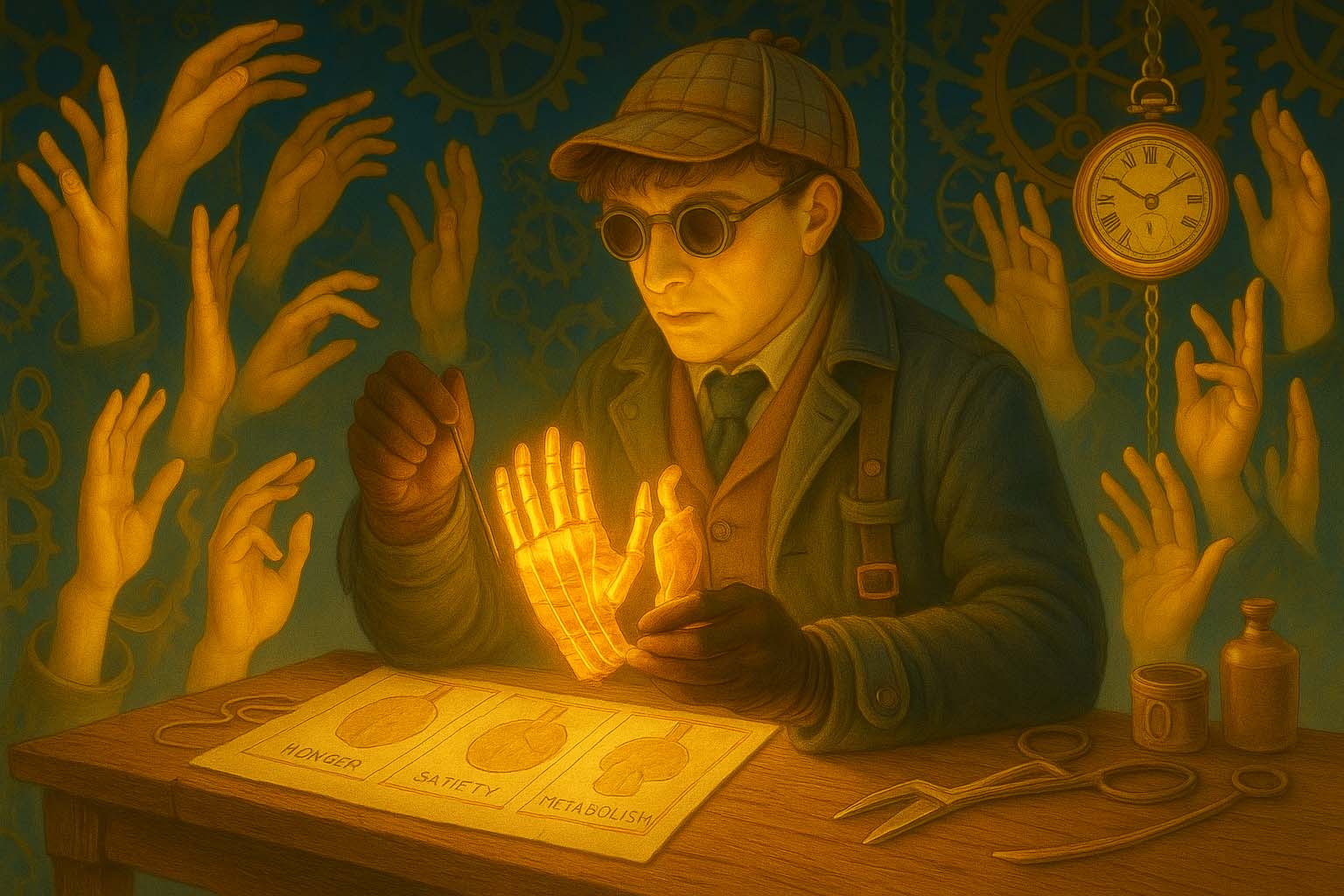
Hand Surgery
- Posted by admin
- Categories Reconstructive, Transplant & Trauma Surgery
- Date May 24, 2025
- Comments 0 comment
The Dexterity Detective’s Domain – Cracking the Cases of Tendons, Touch, and the Tools We Call Fingers
1. Introduction: The Scene of the Specialty
Step into the shoes of a Hand Surgery sleuth.
This is the realm of movement and meaning—where a single laceration can paralyse function, and a subtle deformity can silence a livelihood. Hand surgeons work at the interface of form and finesse, restoring sensation, strength, and skill to the body’s most expressive tools. Welcome to a world where millimetres make meaning, and where restoring a thumb can restore a trade, a touch, or a way of life.
2. Key Mysteries They Solve (Common Conditions)
These detectives specialise in solving cases involving:
- Tendon and Nerve Injuries – precision repairs that restore motion and sensation.
- Fractures and Dislocations – of the metacarpals, phalanges, and carpal bones.
- Carpal Tunnel and Nerve Compression Syndromes – decompressing function from within.
- Congenital and Acquired Hand Deformities – restoring both shape and strength.
Each case is a choreography of bone, nerve, and purpose—where the hand is both a tool and a symbol.
3. Their Trusted Tools & Techniques
Every detective has their kit—and in Hand Surgery, tools may include:
- Microsurgical Instruments – for delicate nerve and vessel repairs under magnification.
- Tendon Grafts and Transfers – recreating lost motion with anatomical creativity.
- Fracture Fixation Devices – tiny screws, plates, and wires to realign shattered structure.
- Rehabilitation Partnerships – therapy-guided recovery is half the battle won.
This is surgery with surgical calm—where steadiness meets strategy in miniature form.
4. The Charms of This Field: Why It Captivates the Curious
- Precision and Purpose: The hand is a masterpiece of function—every repair matters.
- Interdisciplinary Roots: Combines orthopaedics, plastic surgery, and microsurgery.
- Visible Transformation: Outcomes are tangible—restored grip, mobility, artistry.
- Emotional Meaning: The hand connects us to work, care, play, and self-expression.
This is where surgical skill meets life’s daily poetry.
5. Challenges: The Toughest Cases They Face
- Microscopic Margins for Error – Small mistakes can lead to lifelong dysfunction.
- Scar Tissue and Stiffness – Healing is unpredictable; therapy is essential.
- Trauma and Amputation – Complex decisions around salvage, reconstruction, and adaptation.
- Invisible Disabilities – A finger may seem minor—but its loss can devastate function.
But the seasoned hand surgeon knows: in the palm lies power, identity, and recovery’s story.
6. Famous Cases and Hallmark Clues
- The “Classic Presentation” – Numbness and nocturnal pain in fingers: carpal tunnel syndrome.
- The “Zebra” – Ring finger locking with pain on extension: trigger finger due to tenosynovitis.
- The “Aha Moment” – A subtle dorsal hand laceration causing full finger drop: extensor tendon injury.
7. Your Training Trail: How to Join the Investigation
To become a Hand Surgery detective:
- Start with orthopaedic or plastic surgery, then complete dedicated hand surgery fellowship training.
- Master microsurgery, fracture fixation, tendon repairs, and nerve decompression.
- Collaborate closely with hand therapists, occupational therapists, and rehabilitation specialists.
- Cultivate patience and precision—this is surgery measured in millimetres and meaning.
Whether restoring a child’s grasp or repairing a craftsman’s injured thumb, you return more than function—you return identity.
8. Final Words: The Signature of the Hand Surgery Detective
Hand surgery detectives work where motion meets meaning.
They restore what we use to hold, build, soothe, and create.
They repair not just injury, but the human connection to the world through touch.
So if you’re drawn to detailed work, lasting impact, and surgical storytelling told in tendons and bone—then this is your theatre of precision and profound purpose.



